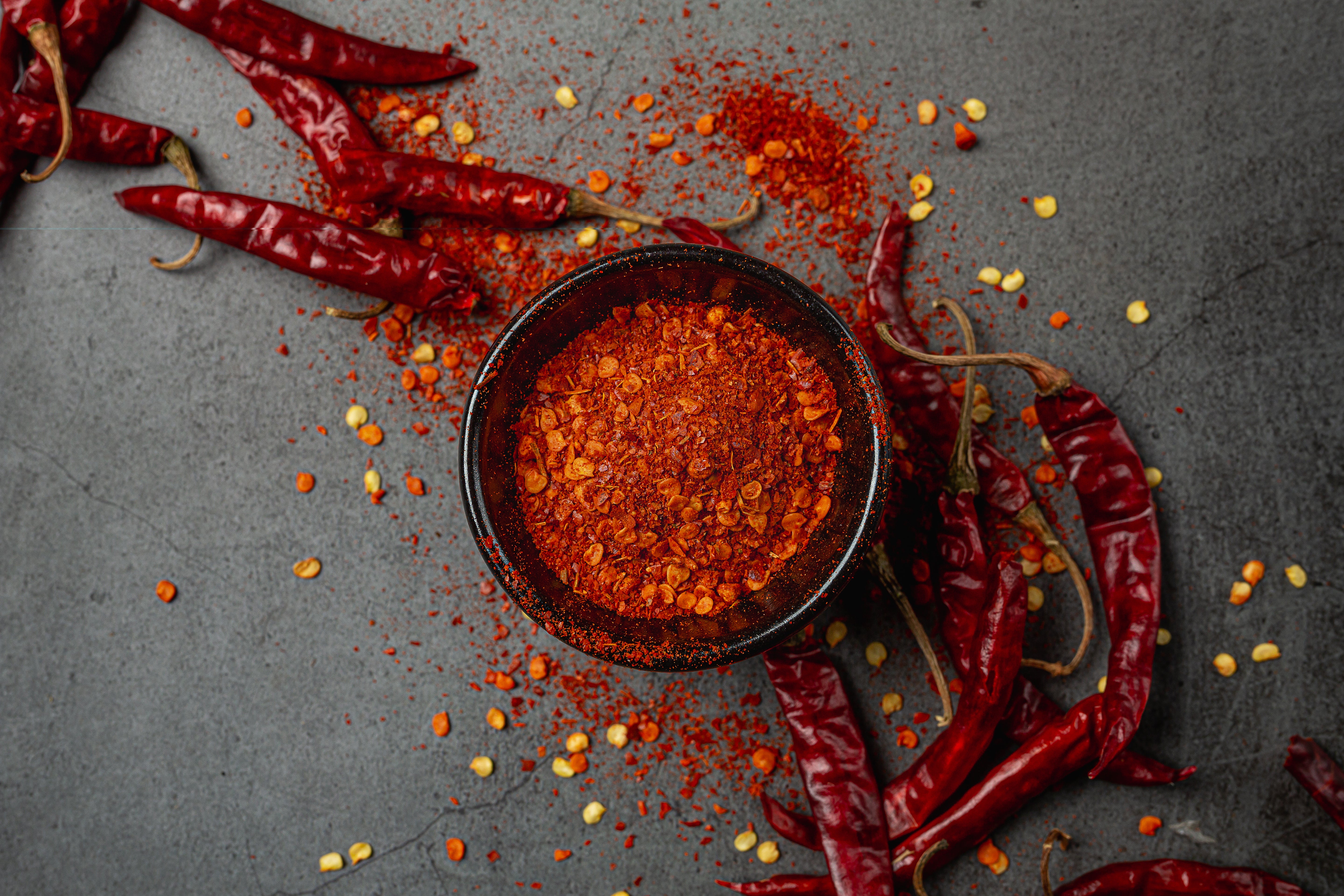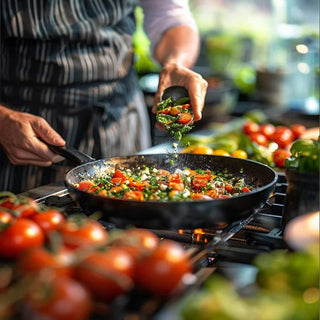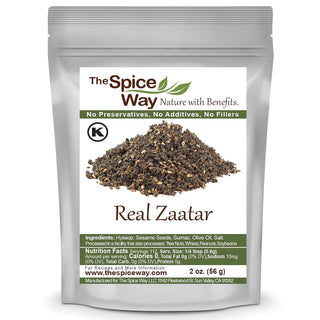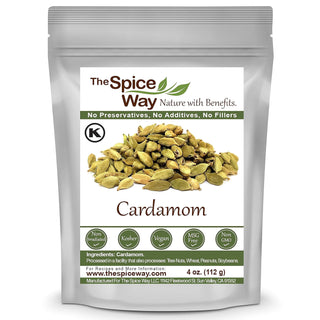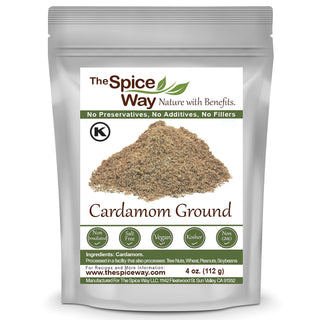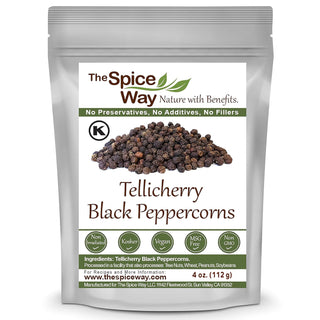Aleppo pepper, also known as Pul Biber in Turkish, is a popular Middle Eastern and Mediterranean cuisine spice. It’s known for its unique flavor and rich red color, but many people ask if it's spicy when first encountering it.
In this post, we’ll explore what Aleppo pepper is, how spicy it is, and how you can use it in your cooking.
What Is Aleppo Pepper?
Aleppo pepper comes from the dried and crushed seeds of the Capsicum annuum pepper, a variety of chili pepper. Named after the city of Aleppo in Syria, this pepper is traditionally grown in the surrounding regions of Syria and Turkey. The peppers are harvested, sun-dried, and then crushed into flakes or powder, making them easy to use in a variety of dishes.
Aleppo pepper is often a key ingredient in Middle Eastern spice blends, such as za’atar, and is used to season everything from grilled meats to salads, dips, and stews.
How Spicy Is Aleppo Pepper?
When it comes to spiciness, Aleppo pepper has a moderate heat level. It ranks between 10,000 and 23,000 Scoville Heat Units (SHU), which measures the heat of chili peppers. To put that in perspective:
-
Jalapeño peppers range from 3,500 to 8,000 SHU.
-
Serrano peppers range from 2,000 to 5,000 SHU.
So, Aleppo pepper is noticeably spicier than a jalapeño but is far milder than hot peppers like habaneros or ghost peppers. The heat is often described as gentle and more of a slow burn, rather than an immediate, intense spiciness. This makes Aleppo pepper an excellent option for those who enjoy a mild to medium heat in their dishes without overwhelming their taste buds.
In addition to its heat, Aleppo pepper has a subtle fruity, smoky, and slightly tangy flavor, adding a depth of taste to dishes without being overly spicy.
How to Use Aleppo Pepper
Because of its moderate heat and rich flavor profile, Aleppo pepper is versatile and can be used in various ways:
-
Sprinkle it on grilled meats: Aleppo pepper pairs nicely with lamb, chicken, and beef, adding a gentle spice and smokiness.
-
In stews and soups: Add Aleppo pepper to soups, stews, and braises for a mild heat that enhances the overall flavor.
-
In marinades: Combine Aleppo pepper with olive oil, garlic, lemon, and herbs to create a flavorful marinade for vegetables or meats.
-
In salad dressings: Aleppo pepper can be mixed with olive oil, lemon juice, and vinegar to make a zesty dressing.
-
In dips: Mix Aleppo pepper into hummus, baba ghanoush, or tzatziki for an extra kick.
Aleppo pepper can also be a topping for pizza, pasta, or roasted vegetables. Just a sprinkle can elevate your dish without making it too spicy.
Health Benefits of Aleppo Pepper
Beyond its flavor and heat, Aleppo pepper offers several potential health benefits:
-
Rich in antioxidants: Like many chili peppers, Aleppo pepper contains antioxidants that may help reduce inflammation and fight oxidative stress.
-
Improves digestion: Capsaicin, the compound responsible for the heat in Aleppo pepper, may promote digestive health by increasing gastric juices and enhancing metabolism.
-
Boosts metabolism: The capsaicin in Aleppo pepper can also temporarily boost your metabolism, helping your body burn more calories.
How Does Aleppo Pepper Compare to Other Peppers?
If you’re familiar with other popular chili peppers, you may wonder how Aleppo pepper compares to them regarding flavor and heat. Here’s a quick comparison with a few well-known peppers:
Aleppo Pepper vs. Paprika
Paprika is another commonly used red pepper in many kitchens. While paprika and Aleppo pepper are made from dried chili peppers, the key difference lies in the heat level. Paprika generally has a mild to sweet flavor with little to no heat, especially in varieties like sweet or mild paprika. On the other hand, Aleppo pepper has a mild to medium heat with a more robust, fruity flavor. It’s an excellent choice if you want a spicier kick than paprika but without going overboard like you would with hotter chili peppers.
Aleppo Pepper vs. Red Pepper Flakes
Red pepper flakes, often used in pizza or pasta, are typically made from dried cayenne peppers. On the Scoville scale, these flakes can have a sharp, intense heat, often between 30,000 and 50,000 SHU, much hotter than Aleppo pepper. With its 10,000 to 23,000 SHU range, Aleppo pepper offers a milder alternative that provides flavor and heat without the overpowering spiciness of traditional red pepper flakes.
Aleppo Pepper vs. Harissa
Harissa is a North African chili paste that combines chili peppers, garlic, olive oil, and spices. It's known for its fiery heat and bold, smoky flavor. While Aleppo pepper can be a component in harissa, it offers a gentler, more subdued heat. Aleppo pepper is an ideal alternative if you prefer a less intense, more subtle heat. You can make your homemade harissa by combining Aleppo pepper flakes with cumin, coriander, and caraway spices.
Aleppo Pepper vs. Habanero
Habanero peppers are extremely hot, with Scoville Heat Units ranging from 100,000 to 350,000. If you’ve ever tasted a habanero, you know that it can pack a punch and overwhelm the palate with intense heat. Aleppo pepper, in comparison, is much milder and more approachable, making it a better option for those who enjoy a little spice but want to avoid extreme heat.
How to Store Aleppo Pepper
Aleppo pepper is best stored in a cool, dark place, away from direct sunlight, heat, and humidity, to preserve its flavor and color. It’s recommended to store it in an airtight container, such as a glass jar or spice tin, to prevent it from losing its potency. Since it’s a dried spice, it can last for several months, but for the best flavor, try to use it within six months to a year.
For those who buy Aleppo pepper in bulk or want to keep it fresh for longer periods, freezing it is an option. Freezing it helps retain its color and flavor over time, especially if you’re not using it as quickly.
Is Aleppo Pepper Available Everywhere?
While Aleppo pepper has grown in popularity due to the increasing interest in Middle Eastern and Mediterranean cuisine, it may not always be available in local grocery stores. However, it is usually found in specialty spice shops, Middle Eastern or Mediterranean markets, and online retailers.
When buying Aleppo pepper, look for a high-quality product, as some varieties may be mixed with other chili peppers or preservatives. Pure Aleppo pepper should have a vibrant red color and a distinct, aromatic fragrance that signifies its freshness and authenticity.
Can You Substitute Aleppo Pepper?
If you don’t have Aleppo pepper on hand, you can create a substitute by mixing other spices to mimic its flavor profile. A good substitute for Aleppo pepper would be a blend of:
-
Paprika (for sweetness and color)
-
Crushed red pepper flakes (for heat)
-
A pinch of sumac (for its tangy flavor)
This combination can provide a similar balance of mild heat, fruity flavor, and tanginess. However, it won’t be a perfect match, and the unique taste of Aleppo pepper might still be missed.
Alternatively, you can use other mildly spicy chili flakes like ancho or pasilla pepper for a similar flavor without the same heat level.
Conclusion
Aleppo pepper is a flavorful and versatile spice with a balanced, moderate heat and a complex flavor profile. While not as spicy as some other chili peppers, it still provides a gentle kick that can enhance a variety of dishes. Whether you’re cooking a Middle Eastern dish, spicing up your meats, or creating a flavorful dressing, Aleppo pepper is a must-have in your spice collection.
With subtle heat, smoky, and fruity notes, Aleppo pepper brings depth to food without overwhelming the senses. So, if you’re looking for a versatile, easy-to-use chili pepper that adds flavor and a little heat, Aleppo pepper is worth a try.
FAQS
1. What does Aleppo pepper taste like?
Aleppo pepper has a unique, smoky, fruity flavor profile, with a mild to medium heat. Its flavor is often tangy, slightly sweet, and a bit earthy, making it a versatile spice for various dishes.
2. Is Aleppo pepper spicy?
Aleppo pepper offers a moderate heat level, ranging from 10,000 to 23,000 Scoville Heat Units (SHU). It’s spicier than a jalapeño but much milder than hotter peppers like habaneros, making it an excellent option for those who want spice without overwhelming heat.
3. How do you use Aleppo pepper in cooking?
Aleppo pepper is excellent for seasoning meats, stews, soups, and dips. It can be used in marinades, salad dressings, or sprinkled over roasted vegetables. Its mild heat and smoky flavor work well in savory and mildly spicy dishes.
4. Where can I buy Aleppo pepper?
You can find Aleppo pepper at specialty spice shops, Mediterranean or Middle Eastern markets, and online retailers. Look for authentic, high-quality Aleppo pepper with a rich red color and a fresh, aromatic fragrance.
5. Can I substitute Aleppo pepper in recipes?
Yes, you can substitute Aleppo pepper with a blend of paprika (for sweetness), crushed red pepper flakes (for heat), and a touch of sumac (for tanginess). While it won’t precisely match Aleppo pepper’s unique flavor, it provides a similar balance of heat and depth.
